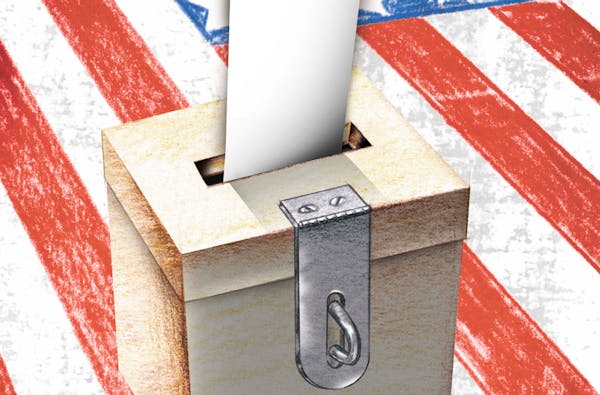Counterpoint
Devin Rice's March 6 commentary "Ranked-choice does minority voters no favors"was a masterwork of selective interpretation. Its claims demand a closer look at Minneapolis election data and a heavy dose of context.
Rice's concern for historically underrepresented voters is appreciated, but it is belied by some key facts. The ballot errors on which he centered his arguments were corrected, and each of these ballots was ultimately counted.
In the entire 2009 election, only one ballot was not counted, and the error on this ballot had nothing to do with ranked-choice voting (RCV). That's remarkable. Absolutely, higher rates of initial errors in some precincts suggest the need for clearer ballots and more targeted voter education and outreach, but that's true no matter what voting system we use.
The old system that Rice favors also results in voter error. In fact, the elections with the highest spoiled ballot rates are even-year partisan primaries, in which voters mistakenly vote across party lines. Error rates have reached as high as 22 percent in the Fifth Ward of Minneapolis (compared with 7 percent in the RCV election). Keep in mind that the voting machines can catch these errors and provide the voter with the opportunity to correct them.
Overall, the RCV debut in Minneapolis was a resounding success, with 95 percent of all polled Minneapolis voters — and 97 percent of voters of color — finding it simple to use.
Citing a Star Tribune report, Rice also repeated the aggregate cost of the 2013 election, much of which is unrelated to RCV and would also occur under a traditional election (expenses related to new equipment, increased election judge costs with anticipated higher turnout and contingency funds for unanticipated expenses). Over time, the reduced expense of the eliminated primary is anticipated to yield savings to the city.
As to the concern that RCV does not produce majority winners, the winner — in a single-seat race — is always the candidate with the majority of continuing ballots in the final round. In some situations, as in the case Rice points to, this is a plurality of initial ballots cast because some voters express only one preference and don't have a candidate in the race in the final round of counting. This is the will of the voter.
Many of RCV's benefits are gradual. Among these is its potential to increase minority representation in government. So while Rice can dismiss this phenomenon after one RCV election cycle, we're unwilling to do so. In San Francisco, where RCV has been in place for a decade, voters are now enjoying rich diversity in city government: All seven citywide officials and nine of 11 members of the Board of Supervisors are people of color.
In Oakland, the city's first female and Asian-American was elected mayor with second-choice votes under RCV. Outspent 5 to 1, she showed that the way to win an RCV election was not by raising the most money but by having the savviest strategy for securing second- and third-choice votes.
As to voter turnout, 2009 — an election year with a popular incumbent mayor — was always expected to be a low-turnout year. Competitive races, not voting method, drive turnout.
What RCV does is maximize voter participation by eliminating unrepresentative primaries (which communities of color attend in disproportionately low numbers). For example, in 2005 (before RCV was enacted), general-election turnout was nearly three times greater than primary turnout (8 percent compared with 21 percent) in the Fifth Ward — which is predominately people of color — compared to two times greater for the city overall (15 percent to 30 percent). RCV mitigates this inequity by holding one election in November, when turnout is higher and more diverse.
Much more telling of RCV's potential to heighten voter engagement will be this year's wide-open mayoral race and richly competitive City Council race; I look forward to dissecting the 2013 elections with Rice in November.
Every city that's tried RCV has a core, vocal group of people defending the status quo. No voting system is perfect, but RCV comes much closer to correcting longstanding inequities in our political process. It is supported by a wide range of leaders from communities of color.
We believe Minneapolis and St. Paul are on the right path and look forward — this election cycle and beyond — to helping ensure that all voters are heard.
____________
Jeanne Massey is executive director of FairVote Minnesota.
The courage to follow the evidence on transgender care

Republicans wanted a crackdown on Israel's critics. Columbia obliged.


